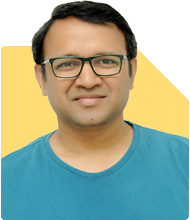Dear Sir,
I am 40 years old and i want to invest Rs.10,000/- per month through SIP in Mutual Funds for the period of 10 Years.
Please suggest in which fund i have to invest.
Ans: Investing in mutual funds through Systematic Investment Plans (SIPs) is a wise decision. At 40, you have chosen the perfect time to plan for your financial future. Investing Rs. 10,000 per month for the next 10 years can build substantial wealth. Let's explore the best mutual fund options to meet your goals.
Understanding SIPs and Their Benefits
SIP allows you to invest a fixed amount regularly in mutual funds. It offers several benefits:
Disciplined Investment: SIP ensures regular savings, promoting financial discipline.
Rupee Cost Averaging: You buy more units when prices are low and fewer units when prices are high, averaging out the cost.
Compounding Effect: Earnings from your investments generate their own earnings, significantly growing your wealth over time.
Assessing Your Investment Goals
Your investment strategy should align with your goals, risk tolerance, and investment horizon. At 40, you might have goals like children's education, retirement, or buying a house. With a 10-year horizon, a balanced approach considering both growth and stability is ideal.
Types of Mutual Funds to Consider
1. Equity Mutual Funds
Equity mutual funds invest primarily in stocks. They offer higher returns but come with higher risks. Given your 10-year horizon, equity funds can provide substantial growth.
Large-Cap Funds: Invest in large, established companies. They are less volatile and provide stable returns.
Mid-Cap and Small-Cap Funds: Invest in medium and small companies. They are more volatile but can offer higher returns.
Multi-Cap Funds: Invest across companies of all sizes, providing a balanced risk-reward profile.
2. Balanced or Hybrid Funds
Balanced funds invest in both equities and debt instruments. They offer a mix of growth and stability. These funds are suitable if you want moderate risk and stable returns.
3. Debt Mutual Funds
Debt funds invest in fixed-income securities like bonds and treasury bills. They are less risky and offer stable returns. These funds are suitable if you prefer lower risk.
4. Tax-Saving Funds (ELSS)
Equity Linked Savings Schemes (ELSS) offer tax benefits under Section 80C. They have a lock-in period of three years and primarily invest in equities. These funds are ideal if you want to save on taxes and earn good returns.
Advantages of Actively Managed Funds Over Index Funds
Actively managed funds have professional fund managers making investment decisions. They aim to outperform the market. In contrast, index funds passively track a market index. While index funds have lower fees, actively managed funds can potentially offer higher returns through expert management.
Benefits of Regular Funds vs Direct Funds
Regular Funds
Expert Guidance: Investing through a Certified Financial Planner (CFP) ensures professional guidance.
Better Decisions: CFPs can help you choose funds that align with your goals and risk profile.
Convenience: CFPs handle all paperwork and administrative tasks, making the process smoother.
Direct Funds
Lower Costs: Direct funds have lower expense ratios as they don’t involve intermediaries.
Self-Management: Requires you to manage and track your investments.
Given your busy schedule and the complexities of financial markets, regular funds through a CFP provide a more comprehensive approach.
Creating a Balanced Portfolio
Diversification is key to managing risk. A well-balanced portfolio might include:
60% Equity Funds: Split between large-cap, mid-cap, and multi-cap funds.
30% Balanced Funds: To ensure stability and moderate returns.
10% Debt Funds: For low-risk, stable returns.
This diversified approach balances growth potential with risk management.
Monitoring and Adjusting Your Portfolio
Regularly review your portfolio with your CFP. The market and your financial goals might change. Adjust your investments accordingly to stay on track.
Your decision to invest systematically shows foresight and financial acumen. At 40, you're taking control of your financial future, which is commendable. Investing Rs. 10,000 monthly through SIPs is a strategic move that will yield significant benefits over time.
Conclusion
Investing in mutual funds through SIPs is a smart way to build wealth. With a balanced mix of equity, balanced, and debt funds, you can achieve your financial goals. Working with a Certified Financial Planner ensures professional guidance, helping you make informed decisions. Stay disciplined, monitor your portfolio, and adjust as needed to ensure financial success.
Best Regards,
K. Ramalingam, MBA, CFP,
Chief Financial Planner,
www.holisticinvestment.in



























